Have you met...Alexandra Rockelmann
Have you met...Alexandra Rockelmann
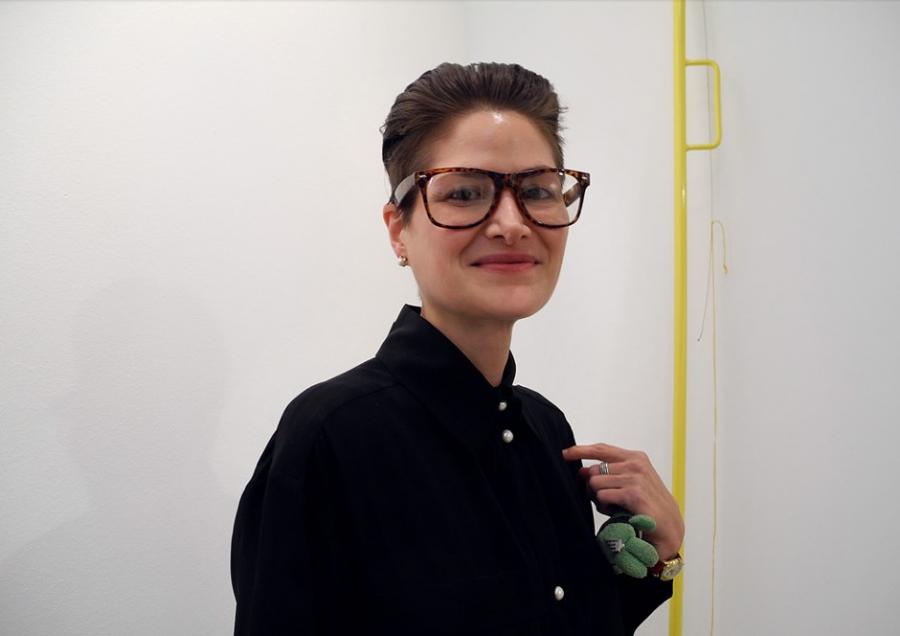
As a logical continuation of co-running Galerie Open in Berlin-Mitte for 6 years, in 2012 Alexandra Rockelmann opened her own space, Rockelmann &. Since then, the space has been dedicated to presentation of young contemporary fine art with a focus on curated conceptual and installation art. Being an experienced gallerist with formal education in the visual arts, Alexandra had a lot of interesting things to share with us about living and working between New York and Berlin, and finally settling in Kreuzberg with her family and a group of close art collaborators.
How did you decide to open a gallery in Berlin?
I was born in Chicago, but I grew up in Berlin. My mom is German and my dad was American. We came over to Berlin when I was six. I went to school here and went back to the States to go to college. I started my Masters at the School of Visual Arts in New York and worked during the day for Denise Bibro Fine Art. Back then I was still a painter myself, I did installations. Then I realised I was actually more of an organizer and more interested in the backstage. I studied theater, literature, and art. When I did theater I was also always the director, and never really keen on being in the spotlight. When I was working with Denise Bibro, I realised that this entire organisational part, doing PR and getting people there was more my thing. But I had the understanding of how valuable artworks are for artists because I produced work once myself. Then I figured I need to decide where want to be in my life, and I decided to live in Berlin. In 2005 I moved back to Berlin and opened up my first gallery with partners, called Galerie Open. It was pretty great because, in the first two years, we had in rent free, we gave them a really good business proposal. In 2008 I took over the old gallery, and closed it end of 2011. I wanted to do a completely new concept with my signature, and that's when – in 2012 – I opened this space, Rockelmann &.
What were the reasons and the results of opening a new venue in a different neighborhood?
I always wanted to own my own gallery. The one before was rental, and this one is actually mine. The neighboorhood is also really important, I always loved Kreuzberg. When I was thinking of coming back to Berlin it was always either Dahlem or Kreuzberg, the two contrasts, because I went to school in Dahlem, I grew up there, but we always went out in Kreuzberg. For me this was the only part of the city that was 24/7 back in the day. That's why Kreuzberg was always for me the place to be. It's very international, you have the Turkish community, then you have the Germans, the Americans, they all intermingle. And it really hasn't changed. So, basically, there was a logistical reason, and also the property was so inexpensive that I couldn't pass it on.
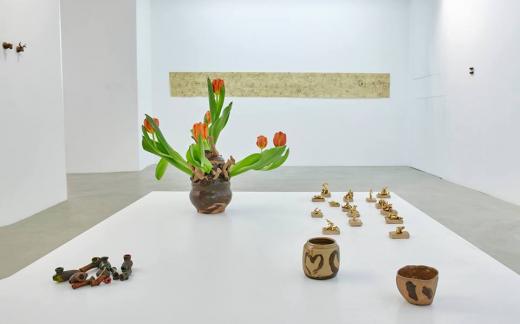
Ben Peterson, "No Survivors", March 16 – April 22, 2017 @ Rockelmann &
You mentioned that the „&“ in the name is a reference to the gallery's collaborators. Why is collaboration so important for you in this project?
Nowadays you need to be a global player, and as an individual small gallery it is just not possible to do it on your own. I felt like not taking myself so important and superior like the old school gallerists. I work with my artists as if they were also partners. Basically, if we do art fairs, I talk to them about it, then we talk about how can we do transportation, they sometimes even help out with it. I talk to them very openly about numbers, and in that sense it's not a traditional gallery but more of a collaboration with everybody being here and being represented. With the ampersand I really want to show that, without these collaborations, the gallery wouldn't even be able to exist. Working with other galleries, sharing the cost, coming up with really great concepts, doing exchanges...For the artists nowadays it's really important.
Another thing that I have to say is about the font of the name – my father used to have a steel company in Chicago, it was called „American Boiler and Tank“, and I found a little block where he would always put notes. It said „From the desk of J.V.Rockelmann“, and I took that font of that block to continue the family history, because he was also a creator, a producer. Even though it was just boiler and steel, it was still something that had craftship.
What is the gallery's main focus?
Pretty much installation, new media art, performance... When you look at the art side, I would say the main focus of the gallery is to question things, and also not to lose touch of what's going on with the new artists. That's why we always do the summer break or summer camp project where young curators who never had a show before can apply. We give them the space, the mailing list, but they need to provide that somebody's here, so they have the feeling of how it is to be a curator in the beginning. That's how I don't lose touch of what's going on.
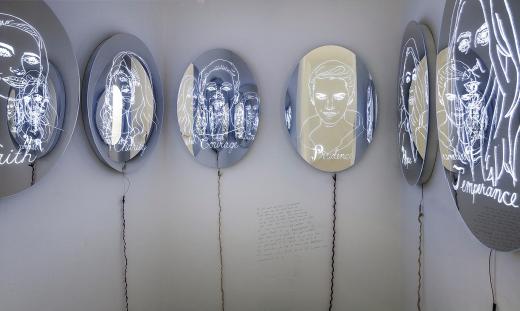
"WE’RE HAVING A GREAT TIME :) – Summer CAMP Project", July 29 – September 03, 2016 @ Rockelmann &
How do you develop the program and choose the artists to work with?
Mainly through working very strongly with Hunter College. Right now I work with 3 artists that are from Hunter College, and it's kind of ironic because it's not that I just focus on that university. Whenever I would go to art fairs, I would see a couple of artists that I really wanted to work with. I would then follow their work for at least a year, watch how the body of work develops, try to see if it is only one work that I thought was good or the entire body. Then I would also look at the concept. Of course, an important thing is that I personally get along with them. If the work is good but we don't personally get along, it would be rather impossible. The way I pick young artists is that I go to a lot of univeristies, master thesis shows, fairs... For example, I was at Art Cologne in 2007 and I saw a work of Kathleen Vance. I really needed to know who this is, how to get in touch with this artist. And then I found out – Hunter College again. We just recently bought another work of Anna Schwartz Gallery, by Johanna Jaeger, and she was also at Hunter College. They have a lot to do with installational works, 2D, really good photography and performance, and that's also what we're really interested in.
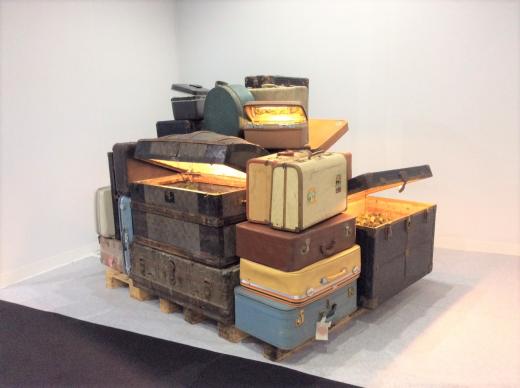
Kathleen Vance, Installation shot @ Volta NY 2017
What are the highlights of running a gallery on your own, and on the flipside – what were the biggest challenges you've encountered?
The highlights... It is great because you have this welcoming, helping community of same-minded people. I saw that when Donald Trump was elected, how all of the art people questioned things. We had these really good conversations and ideas of what we can do to continually support the art. We started a residency called „Take a Break From Trumpland“ where the artists can stay up to three months in an apartment, we take care of everything and they can just take a deep breath and realise there is true democracy still in existence. So, those are the great sides. These people are my colleagues or my clients, but it goes beyond that. It becomes something else, we actually become friends.
The negative side is that the gallerist is still seen as someone who is making all the money, and nobody sees that it's me as a gallerist who is stuck with all of the costs and expenses. If the sales aren't going so well, nobody asks how am I supposed to survive. I can't constantly invest if nothing ever comes back. But I have really cooperative artists. We have an agreement that they first get paid when we break even.
What I'm trying to say is, I believe there is a new era of galleries because it's not anymore about printing highly expensive business cards in order to play this game of success. I'm very honest about things, and for me it works a lot better because the artists know exactly what's going on.
I'ts also difficult, it's admitting that we need to make changes. That's why we do special editions that are below 150 euros – because that's pretty much the Berlin market. The challenge is to keep the financial side of the gallery, but it's also a very sticky subject to deal with.
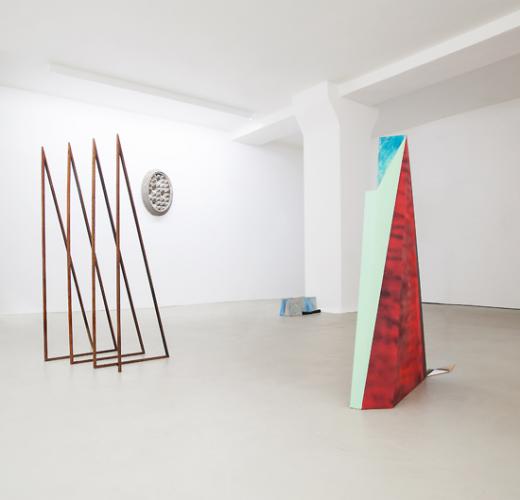
Yasmin Alt, Installation view, 2014 @ Rockelmann &
How would you like to see the gallery develop in the coming years?
More museum shows, more collaborations, and also I would love to have a second gallery or an off branch in Albuquerque in New Mexico, that's still my dream. And the reason why there is because then I could focus on land art. We already have some really cool land artists, Marnie Bettridge and Kathleen Vance. I would also focus more on installation in the countryside.
I see the gallery in the future with a steady curator who works with me, and I think we're going in the right direction.
The gallery is my main job, but my husband and I are slowly taking over the family business on the side, a hotel with a swimming pool and a restaurant. Now we're starting to take over the restaurant and that's why we're doing the pop-up restaurants, to kind of get in the groove of how that side works.
So, the pop-up restaurants are going to become part of your program?
Yes. It's going to be with the catering company that we're building up right now, it's called Mint, which is also going to be the company that's going to do the restaurant. We are going to redo it, but we're going to be working closely with artists, with really good cooks, we're going to invite them as guests. We're planning to work with regional and seasonal products only and in a creative way. We will also sell the products that we offer on the menu.
* * * * *
ROCKELMANN &
Schönleinstr. 5, 10967 Berlin
More info